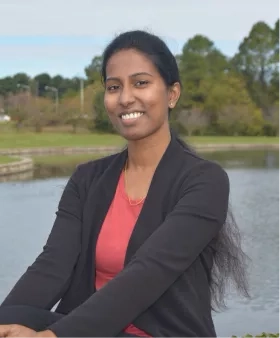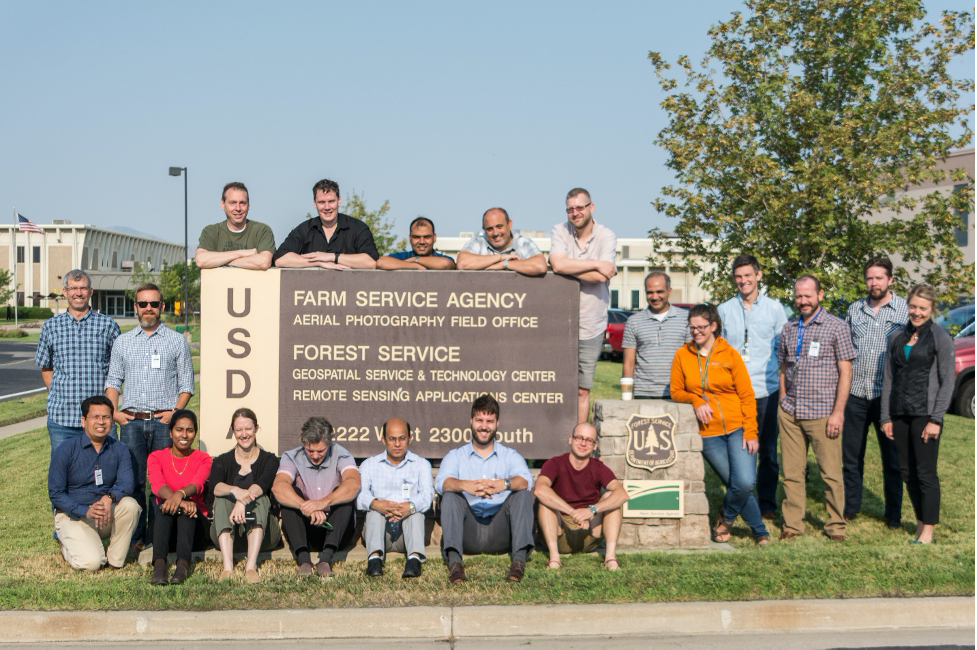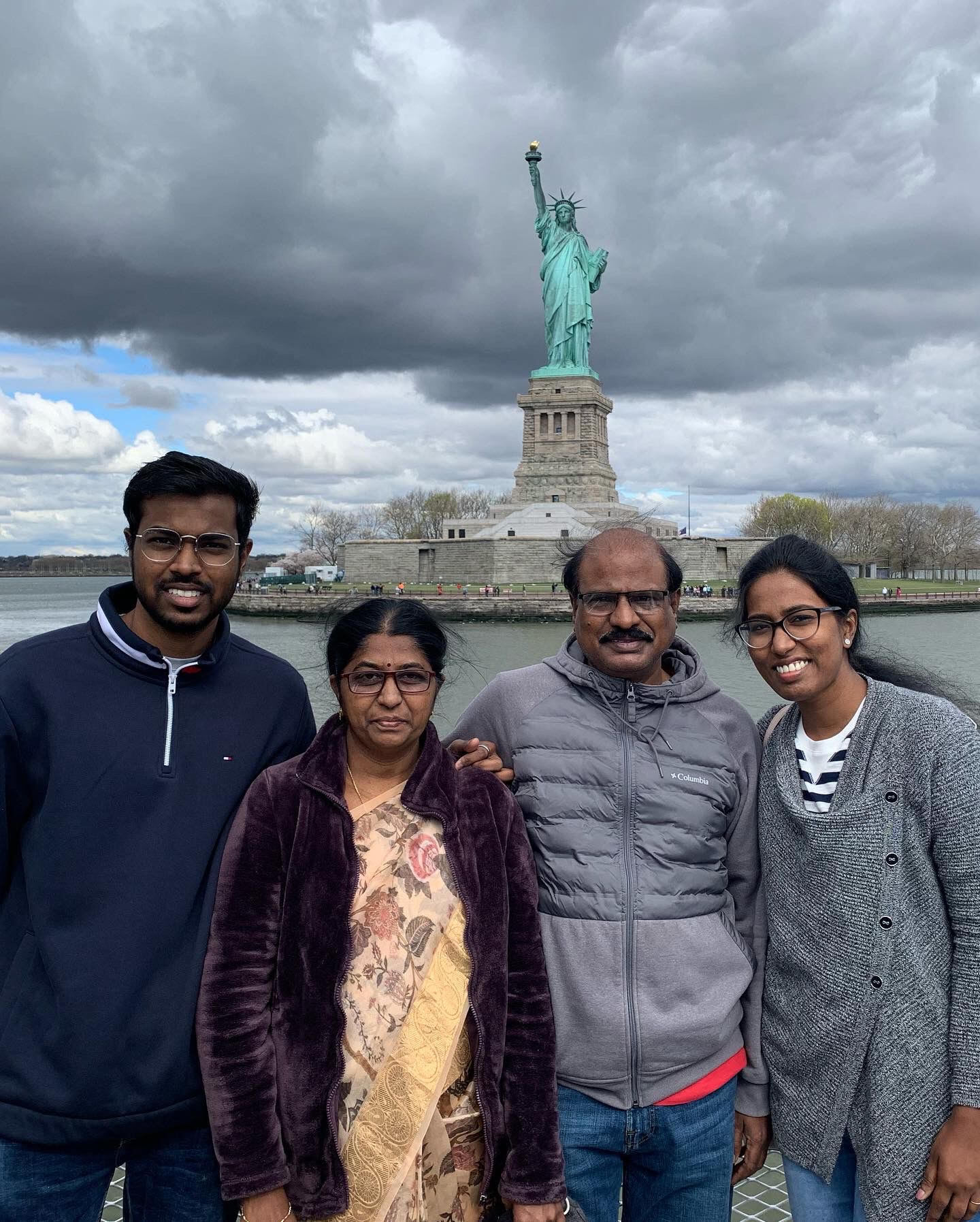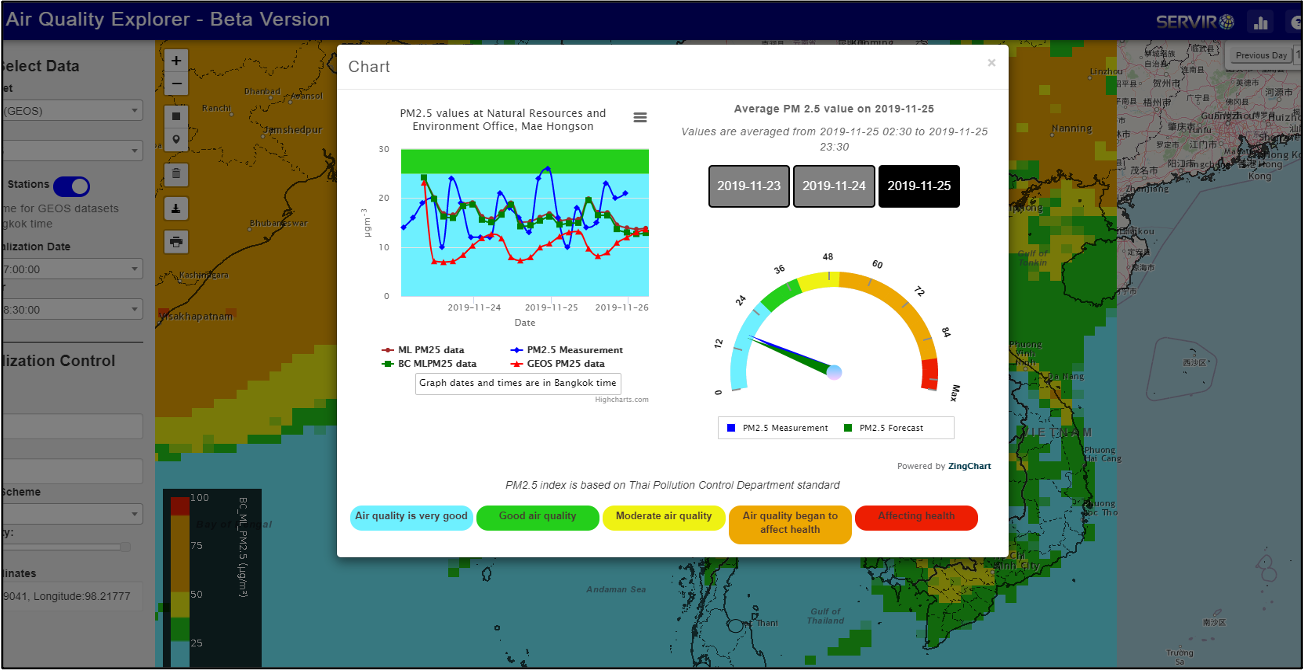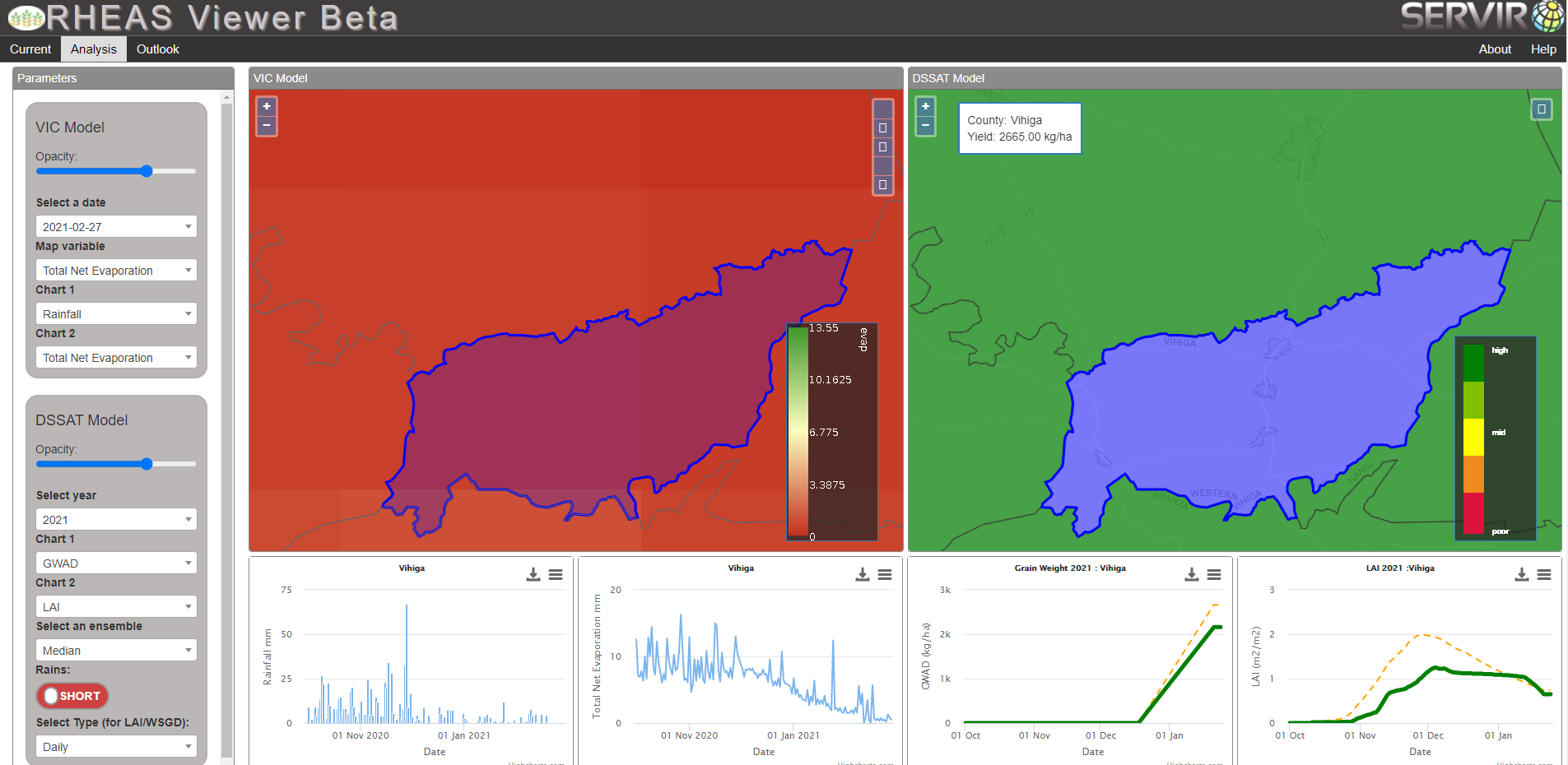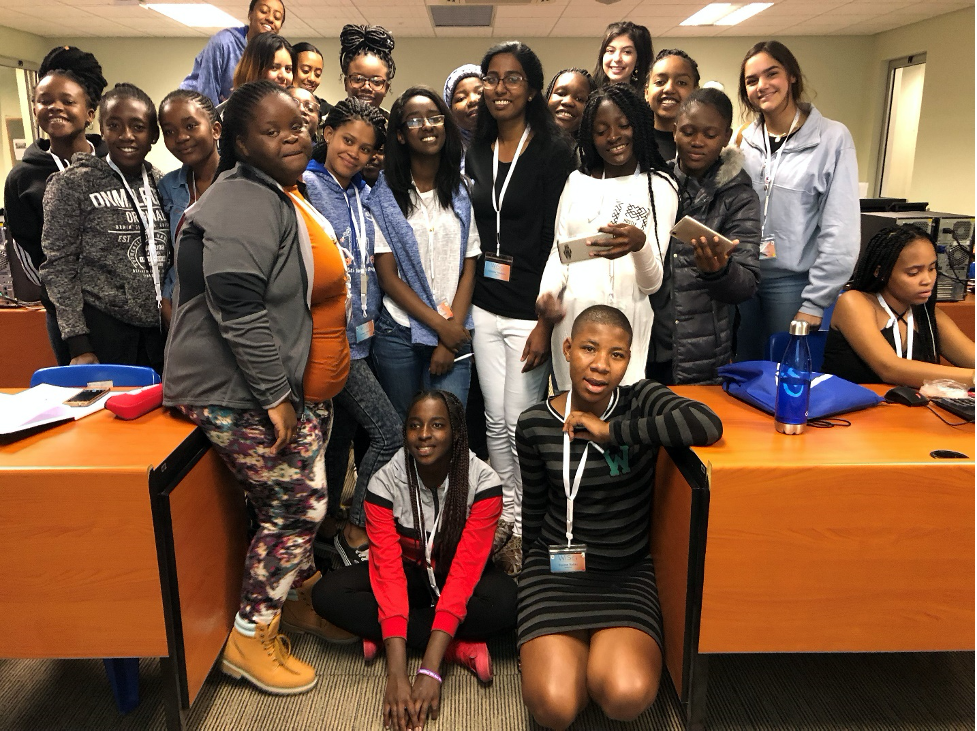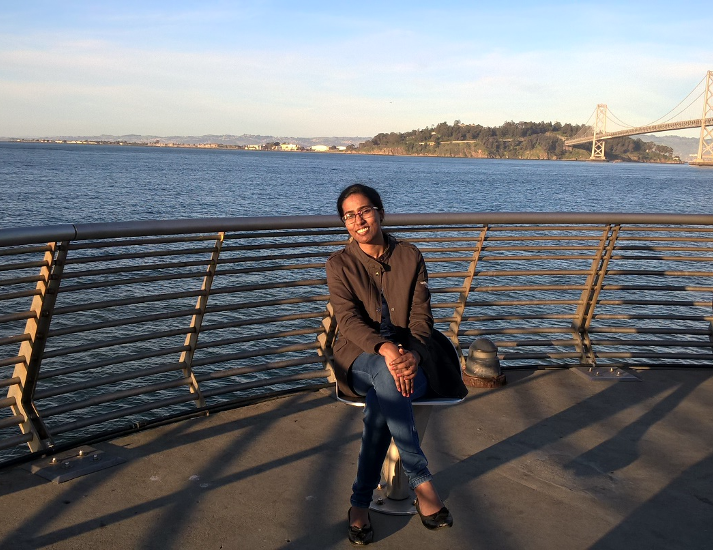When you’re browsing a website or using an app, it can be easy to take for granted the amount of work — and code — that goes into creating a seamless experience. That’s because software developers like Githika Tondapu work tirelessly behind the scenes to anticipate your needs and challenges and find solutions for them before you ever see them.
Tondapu works with NASA Applied Sciences Program’s SERVIR, a joint development initiative of NASA and the United States Agency for International Development (USAID) that helps developing countries use information provided by Earth observing satellites and geospatial technologies to manage climate risks and land use.
The tools Tondapu makes put Earth observations in the hands of stakeholders across the globe and empower them to address needs on the ground. Over the past four years with SERVIR, she has used her coding prowess to develop interfaces that have helped decision-makers in places like Thailand and Africa monitor land use, air quality, water resources and more.
“I create a bridge between scientists and decision makers,” Tondapu explained. To build that bridge, she takes the complex data and analyses her scientist colleagues assemble from Earth-observing satellites and translates them into tools, web applications and interfaces that are easy to use and run smoothly.
“Working with Githika is like a breath of fresh air,” said Emily Adams, the Eastern and Southern Africa science coordination lead at SERVIR who is working with Tondapu on a crop modeling tool. “The best part about working with Githika is that she can take my vision and make it reality. She is a great listener and that strengthens her already amazing computer science capabilities.”
Success is No Accident
Although the applications she builds look effortless, the path she followed to get where she is today was anything but. If Tondapu were to write an autobiography, she’d name it “Success is No Accident. It is Hard Work and Perseverance” in a nod to the famous quote from Brazilian soccer player Pelé.
Tondapu grew up in India and earned her undergraduate degree there before coming to America to earn her master’s degree in computer science from the University of Missouri. Since then, Tondapu’s career growth has involved a lot of hard work — but her love for solving problems kept her going and eventually brought her to SERVIR.
“It’s what made me become a software developer,” Tondapu said. “Here at SERVIR, we are addressing problems related to disasters, food security, forest fires and other challenges. The applications I’ve helped develop are addressing these problems, and I’m making tools that help decision makers.”
One of the applications Tondapu developed recently is an Air Quality Explorer tool for Thailand. The project was a joint effort between the SERVIR-Mekong hub and USAID and involved experts in air quality measurement, technology design, atmospheric modeling and civic engagement — including the Royal Thai Government’s Pollution Control Department and Thailand’s space agency. The Air Quality Explorer tool tracks and forecasts air quality in the region, which has struggled with poor air quality from pollution for over a decade.
Tondapu was instrumental in helping to combine NASA satellite data, ground-sensor data and machine learning analyses into one cohesive interface.
“Without Githika, there wouldn’t be an Air Quality Explorer,” said Amanda Weigel, the NASA/SERVIR-Mekong regional science coordination lead. “Though the work SERVIR does is Earth science focused and Githika is a computer scientist, she has an amazing ability to learn the necessary science needed to build tools such as the Air Quality Explorer. She is very patient, and works well collaboratively so I, as an Earth scientist, have learned a lot about app development while working with her.”
To create the Air Quality Explorer, Tondapu worked with air quality experts to set up the data pipelines needed to monitor air quality and led the tool’s development. It took a tireless commitment to getting things just right, especially due to the 12-hour time difference between Thailand and Tondapu’s location at SERVIR’s Huntsville, Ala. office. By working during the day and collaborating with partners in Thailand at night, Tondapu’s dedication pulled the tool together. Now air quality experts in Thailand have adopted the entire tool as-is and even the Prime Minister’s office promoted it. It has also been widely lauded as a groundbreaking pollution monitoring system, in large part because of its inclusion of satellite data.
“This speaks volumes about her adaptability and attention to detail,” said Ashutosh Limaye, a project scientist for SERVIR. “And yet, Githika is very unassuming. She seeks no glory from the great work she does. In fact, she prefers to be behind the scenes, though her work speaks volumes on her behalf.”
Developing Interfaces that Make a Difference
Tondapu’s ability to work collaboratively and connect with both scientists and end users is one of the characteristics that make her so successful in her role. Through these interactions, she’s learned how to translate the constant fluctuations in Earth data and end user needs into a reliable tool.
“One of the nicest things about working here is that [the scientists] will not hesitate to bring about a better outcome for the end user,” Tondapu said. “And they know I’m willing to make the changes, so they’re willing to give the input. Ultimately the tool I’m making isn’t just for the purpose of developing it or getting my work done. It is used by decision makers at a country, state, or regional level. Knowing it’s impacting people somewhere in some place, I don't just think about getting the work done.”
Tondapu’s willingness to go the extra mile to get things just right does not go unnoticed by colleagues. Although she is often hesitant to take credit for the incredible work she does, others at NASA are quick to point out the impact she has on SERVIR’s mission.
“The tools Githika develops put Earth Observations in the hands of stakeholders all over the world and help them to address needs on the ground,” said Amanda Weigel. “These applications have ranged from water resources to air quality, drought and Collect Earth Online, an image analysis crowdsourcing platform adopted by the UN Food and Agriculture Organization. Her expertise and high-quality work make her an instrumental part of SERVIR and all it does.”
While still in development, one of Tondapu’s latest projects will support better food security in the East African region. Developed by NASA’s Jet Propulsion Lab in partnership with Kenya’s Regional Centre for Mapping of Resources for Development (RCMRD), the Regional Hydrologic Extremes Assessment System (RHEAS) Viewer pulls together crop yield models from different soil types, seed varieties and rainfall and temperature forecasts. These datasets are very large and need a good deal of careful dissection to make them digestible for end users. That’s where Tondapu comes in. She built a web application that allows users to parse the data in a multitude of ways depending on their needs.
"Githika's ability to turn our ideas into user-centric products is really amazing,” said Lilian Ndungu, the thematic lead of agriculture and food security at RCMRD. “She easily grasps concepts and figures the most efficient way to execute them."
Paying it Forward
Tondapu’s passion for solving problems and helping people extends beyond coding interfaces. She also finds a sense of fulfilment and joy in helping younger generations learn the skills needed to achieve their goals. “I think education is the best gift that you can give someone,” she said.
When Tondapu was getting her bachelors’ degree, she tutored 7th and 8th grade students in math and science. While she is unable to teach currently due to the limits of her visa, she lists her trip to the Women in Science camp in Namibia in 2018 as one of her proudest accomplishments at NASA. Tondapu joined NASA colleague Emily Adams for a four-day camp aimed at teaching young girls about different aspects of STEAM. STEAM is an acronym in education which stands for science, technology, engineering, arts and math. Tondapu and Adams taught participants basic programming and gave a crash course on satellite data — what it is, how it works, and why it’s important.
She also had the opportunity to answer some of their most pressing questions and concerns about working in male-dominated industries, like how to get scholarships for college and how to navigate the challenges of being a woman in science, engineering and other typically male-dominated fields. Tondapu enjoyed the opportunity to encourage young girls to pursue their goals fearlessly and answer any questions they had — even the unexpected ones.
“When you say NASA, many people think it’s about being an astronaut — “How do I become an astronaut?” is one of the questions they asked me,” Tondapu said. But it’s not just astronauts. If you want to work for NASA, you can also become a software engineer like me, or a scientist like [Adams]. After joining SERVIR, I was happy to learn that it’s not just astronauts or scientists who can make big achievements. Even IT people like me can make a difference.”
You can learn more about SERVIR’s projects and mission here.

